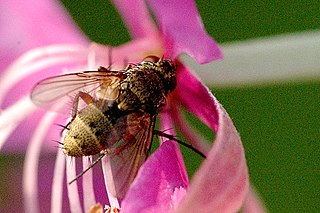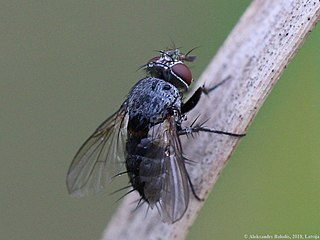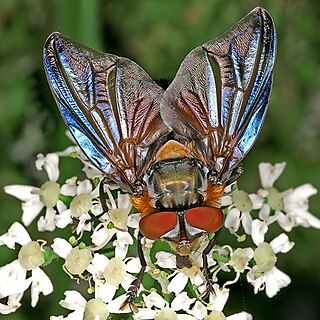Aplomya is a genus of flies in the family Tachinidae.

Ceranthia is a subgenus of flies in the family Tachinidae. Some consider this to be a subgenus of Siphona, most European workers seem content that this is a genus in its own right.

Ceromya is a genus of flies in the family Tachinidae.

Peribaea is a genus of flies in the family Tachinidae.

Phasia is a genus of flies in the family Tachinidae.
Phebellia is a genus of flies in the family Tachinidae.

Siphona is a genus of flies in the family Tachinidae.

Linnaemya is a genus of flies in the family Tachinidae.

Lophosia is a genus of flies in the family Tachinidae.

Ramonda is a subgenus of flies in the family Tachinidae.

Dufouriini is a tribe of flies in the family Tachinidae.

Exoristinae is a subfamily of flies in the family Tachinidae. Most species are parasitoids of caterpillars.

Eryciini is a tribe of flies in the family Tachinidae.

Goniini is a tribe of parasitic flies in the family Tachinidae. Members of Goniini are distinguished from other Tachinidae by laying small "microtype" eggs that hatch only after being ingested by a host.

Phasiinae is a subfamily of flies in the family Tachinidae. Except for the small tribe Strongygastrini members of this subfamily attack only Heteroptera.

Leucostomatini is a tribe of flies in the family Tachinidae, found worldwide.

Ernestiini is a tribe of flies in the family Tachinidae.

Tachininae is a subfamily of flies in the family Tachinidae.

Leskiini is a tribe of flies in the family Tachinidae.

Minthoini is a tribe of flies in the family Tachinidae.
















